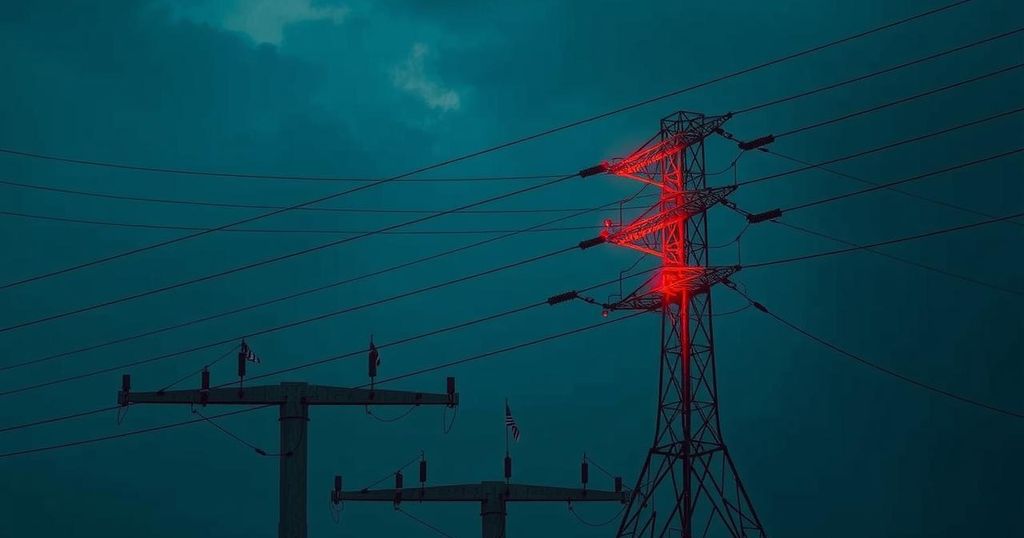Cuba faces a total power outage after Hurricane Rafael strikes, marking the second such event in two weeks. The Category 3 hurricane caused extensive damage to agriculture and infrastructure while raising concerns about the government’s ability to respond effectively. The nation’s aging systems and economic limitations amplify the challenges of recovery and adaptation in the face of increasing hurricane threats.
Cuba is presently experiencing a significant crisis as the entire island faces a power outage once again, just two weeks after a similar event. This latest setback follows the onslaught of Hurricane Rafael, which tore through the western regions of Cuba, wreaking havoc on agricultural lands by uprooting trees and destroying power lines. However, reports on the immediate damages remain limited after the storm transitioned into the Gulf of Mexico, losing some intensity, according to the United States National Hurricane Center (NHC). The formidable storm, classified as a Category 3 hurricane with maximum sustained winds of 185 km/h (115 mph), raised alarms for potential life-threatening consequences, such as storm surges and flash floods. The vulnerability of Cuba’s infrastructure, given its aging condition, contributes to the significant risks presented by inclement weather events. In Havana, residents inspected the damage, discovering relatively dry streets, as the storm had initially skirted about 60 km (40 miles) from the capital, interrupting operations in regions critical for tobacco production. In response to the crisis, the Cuban government has mobilized military resources to address the disaster, emphasizing measures to safeguard both residents and assets. However, there exists a palpable sense of anxiety among the populace, as many doubt the government’s capacity to restore services swiftly due to previous experiences with prolonged outages and structural inadequacies. The voice of the affected resonates with despair, as individuals face homelessness, lack of food preservation, and uncertainty regarding the state of essential services. This occurrence follows a previous power failure linked to outdated thermoelectric systems in Cuba and Hurricane Oscar’s impact, highlighting the ongoing challenges faced by the nation’s infrastructure in the wake of severe weather. As hurricane season draws to a close, experts predict a continuation of elevated storm activity in subsequent seasons, with the possibility of increased hurricane frequency. The repercussions of Hurricane Rafael serve as a stark reminder of the vulnerability of island nations to climatic disturbances and the resilience needed for recovery and adaptation.
The article addresses the significant challenges faced by Cuba in the wake of Hurricane Rafael, a powerful Category 3 storm that led to a nation-wide power outage. Coupled with a recent history of similar incidents, including another hurricane and infrastructure issues, the events highlight the strain on Cuba’s aging systems and the government’s response capabilities. Each significant storm event causes physical destruction and social distress, exacerbating the struggle of the Cuban populace, especially considering the island’s economic constraints and reliance on external support.
In conclusion, the power outage affecting all of Cuba following Hurricane Rafael underscores the fragility of the country’s infrastructure and the severe impact of severe weather events. Amidst this crisis, the Cuban government is called to action to restore essential services and support the affected populace. The recurring nature of such disasters illustrates the urgent need for enduring solutions to enhance resilience against future hurricanes, ensuring the well-being of its citizens, and improving overall infrastructure.
Original Source: www.aljazeera.com






